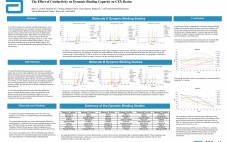Viral vaccines are usually produced by anchorage-dependent cell lines. At industrial scale, these cells are either cultivated in static mode on multiplate systems (Roller bottles, Cell Factories, Cell Cube, etc.) or on suspended micro-carriers (porous or non-porous) in in bioreactors. Multiplate systems are bulky and require a lot of handling operations, whereas microcarrier cultures require numerous operations (sterilization and hydration of carriers,bead-to-bead transfers) from pr eculture to final process. However most of the currently available disposable reactors are not well…
Friday, November 12, 2010 Daily Archives
Albumin: A robust pharmaceutical excipient in the stabilization of protein therapeutics
Optimal formulation of peptide and protein pharmaceuticals into efficacious dosage forms to ensure sufficient stability and provide acceptable shelf life is critical. To achieve a stable pharmaceutical drug product, excipients are often added to the protein drug substance. In this study, we investigate recombinant human albumin (rAlbumin) for its ability to prevent or minimize physical and chemical degradation of two allelic variants of the recombinant malaria vaccine candidate, merozoite surface protein 2 (MSP2), in various test formulations. The studies establish…
The Effect of Conductivity on Dynamic Binding Capacity on CEX Resins
In an effort to improve the antibody manufacturing platform, newer Cation Exchange Resins were evaluated. Dynamic binding studies were conducted using 2 different monoclonal antibodies at a stable pH and varying conductivities across nine resins to determine the differences in binding capacity. DBC Studies were performed at a pH of 5 and conductivities of 5, 10 and 15 mS/cm for the nine cation exchange resins with breakthrough criteria set at 10%. While most of the resins provided excellent binding capacity…



